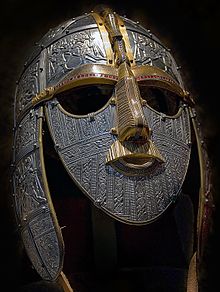
| This article is part of the series: |
| Anglo-Saxon society and culture |
|---|
 |
| People |
| Language |
| Material culture |
| Power and organization |
| Religion |
Government in Anglo-Saxon England covers English government during the Anglo-Saxon period from the 5th century until the Norman Conquest in 1066. See Government in medieval England for developments after 1066.
Until the 9th century, England was divided into multiple Anglo-Saxon kingdoms. Each kingdom had its own laws and customs, but all shared a common basis in the Germanic legal tradition. In the 9th century, the Kingdom of Wessex absorbed the other kingdoms, creating the unified Kingdom of England.
The king's primary responsibilities were to defend his people, dispense justice, and maintain order. Kings had extensive powers to make laws, mint coins, levy taxes, raise armies, regulate trade, and conduct diplomacy. The witan or royal council advised the king, and the royal household provided the administrative machinery of government.
England was divided into ealdormanries led by ealdormen (later earls) appointed by the king. An ealdormanry was divided into shires. The ealdorman enforced royal orders, presided over the shire court, and led the local fyrd (army). A sheriff administered each shire as the ealdorman's deputy. Shires were divided into administrative units called hundreds.
- ^ Yorke 1990, p. 17.
© MMXXIII Rich X Search. We shall prevail. All rights reserved. Rich X Search
